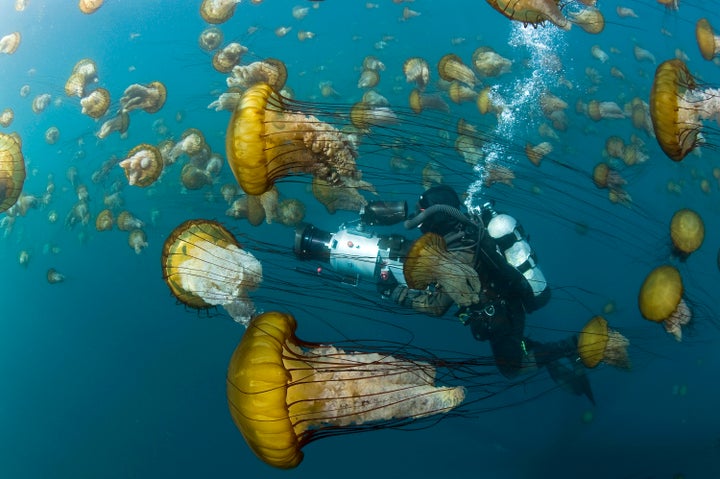
By David Biello(Click here for original article.)
Jellyfishes rely on drifting to eat. They take their luck with currents, and create tiny eddies to guide food toward their tendrils. Yet in waters from the Sea of Japan (aka East Sea) to the Black Sea, jellies today are thriving as many of their marine vertebrate and invertebrate competitors are eliminated by overfishing, dead zones and other human impacts. How have these drifters of the sea reversed millions of years of fish dominance, seemingly overnight?
Biologist José Luis Acuña of the University of Oviedo in Spain and his colleagues now suggest that jellyfishes are just as effective at mealtime as fishes when judged by the right measures. "Jellyfishes are ancient organisms, which use a primitive predation mechanism based on generating feeding currents to bring the prey into contact with their bodies," Acuña explains. "In spite of this primitivism, jellies are as effective as fishes in catching prey and in transforming the energy acquired [into] body growth and reproduction."
So where fishes use their eyes to spot planktonic prey, jellyfishes rely on body size—like the lion's mane jellyfish's 37-meter-long tentacles—to maximize their success. To achieve that size gain, predatory jellyfishes have relied on water incorporated into their tissues—the refrigerator-size Nomura's jellyfish from the Sea of Japan comprises mostly water. A larger body requires more energy to move, so jellies let the surrounding water do the work for them, which makes them some of the slowest swimmers in the sea. And measured by the amount of carbon in their bodies—rather than total weight—jellies consume and incorporate as much prey as fishes do, Acuña's team found. The results are detailed in the September 16 issue of Science.
"It is very neat work," says ecologist Kylie Pitt of Griffith University in Australia, who is working on similar research. When combined with overfishing, climate change, fertilizer runoff–induced dead zones and other human impacts on ocean fishes, a watery evolutionary stage has been set for a jellyfish takeover—dubbed the "gelatinous ocean" by some scientists.
There are exceptions to this rule: The cannonball jellyfish—a seafood delicacy in Asia—shoots through the water at 15 centimeters per second, a decent clip. And the return to ocean conditions last seen in the Ediacaran period more than 540 million years ago—when jellies last ruled the seas—has been a boon for certain fishes in habitats like the Benguela Current in the South Atlantic off Namibia in Africa, where jellyfish-eating gobies have replaced sardines in the food chain. The growing abundance of these jelly-feeding gobies now serves to provide sustenance to the predators that formerly feasted on the sardines, such as seabirds, larger fishes and, ultimately, humans. "We need research to be sure of what new ecological scenarios are arising," Acuña says.
"It is time to take [jellyfishes] seriously," Acuña adds, both as a marine predator and a future seafood source.